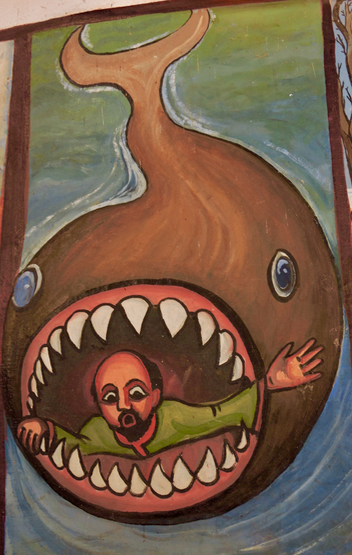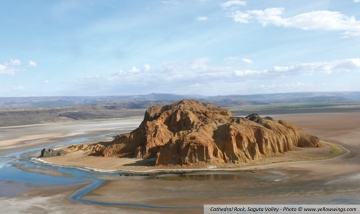Highlights of the Remote North
Driving to Kenya's remote north is a true adventure - but it's well worth the effort. From nomadic tribes, to desert oases, to solidified lava, to painted churches - this place is truly unique.

Camp on Central Island in Lake Turkana
You’ve undoubtedly heard of the stunning Lake Turkana but have you considered camping on the volcanic island at its centre?
Known as the Jade Sea for the striking green colour of its huge expanse of water, Lake Turkana is home to vast numbers of hominid fossils which has led the region to be called the Cradle of Mankind. Only the adventurous venture to the far north of Kenya. As you head north, the roads become rougher and tougher, the landscape starker and more surreal. As your tyres jar against the lava and you wonder – once again – if you’ve segued into a moonscape, you’ll doubt your judgement in taking on this expedition. But suddenly, when a slash of sparkling green comes into view, your heart will soar and you’ll know it has been more than worth it.
Lake Turkana is the world’s largest permanent desert lake as well as the world’s largest alkaline lake. Formerly known as Lake Rudolf, the lake has featured in numerous films including the classic Constant Gardener. At its centre is Central Island, a UNESCO World Heritage Site. A volcanic island with several craters and cones that still spurt steam, Central Island makes a lovely if somewhat daring destination for a camping expedition. Not for the faint of heart, this is the trip of a lifetime.
You can take a boat from either side of the lake to the island. Heed locals’ warnings about the winds: the lake is wild and violent storms strike swiftly. Take your time on the water, stopping perhaps to fish for your supper or to gaze at the aquatic birds, but be sure to reach the island well before dusk. Then the island is yours to explore. Pick the site to pitch your tent and breathe a sigh of pleasure.
As the sun sets over the lake, gin and tonic in your hand and fresh fish grilling on the fire, you’ll know that taking the road less travelled to Kenya’s undiscovered north was the best decision you ever made.
Discover a painted church in the Chalbi Desert
The Chalbi Desert is one of the hottest and driest parts of Kenya yet deep within it is a hidden gem: a church built of rock, its walls adorned with vivid Biblical paintings.
With an area of around 100,000km2, extreme heat and arid climate, the Chalbi Desert is considered the only true desert in East Africa. Stretching from Lake Turkana to the Ethiopian border, the desert is a bleak stretch of sheer sand broken infrequently by clumps of hardy grasses and the odd rock. Occasional dust storms sweep across the sand, blurring the atmosphere and clouding the air. Meaning ‘bare and salty’ in the Gabbra language, Chalbi, once a lake, has fossilised remains of fish buried in its sand.
Only the toughest species survive here. Camels, known as ships of the desert and able to live for months without water, are the only animals able to cross this barren land. Around the desert’s edges, the odd ostrich or oryx is occasionally spotted. Nothing else moves but the people of this extreme region and even they, knowing its foibles and dangers, rarely venture far from their village or well.
Yet in this harsh land is a place of wonder. Kalacha Catholic Church, its walls of volcanic rock, stands in the sweeping sands. Less than 20km from the Ethiopian border, the church is shaped like a pentagon; shaded outhouses form a makeshift school. Inside is a revelation. The walls are painted with colourful and dramatic Bible stories. Depictions of both old and new testament tales are found here, artistically painted and imaginatively represented. The people of the Bible have dark skin and almond shaped eyes; angels have wings extending from their faces; vivid haloes glow around the heads of the saints. African animals populate the stories. Lions, elephants, giraffes and flamingos can all be seen in these striking murals.
Drive across this land at your peril. Pack plenty of water and make sure your mechanical skills are up to scratch. Then take your courage in your hands and hit the desert. You’ll be wowed by what you see.
Tamara Britten, 26 June 2021
Published also in: The Standard: Travelog Magazine
About the region
Northern Kenya

Vast tracts of desert stretch across Kenya’s remote northern region. Lake Turkana, known as the Jade Sea, slices through the desert. Jagged, forested mountains rise from this stunning yet savage terrain. The region, known as the Cradle of Mankind, is the site of some of the world’s most important prehistoric discoveries.
Read more about Northern Kenya